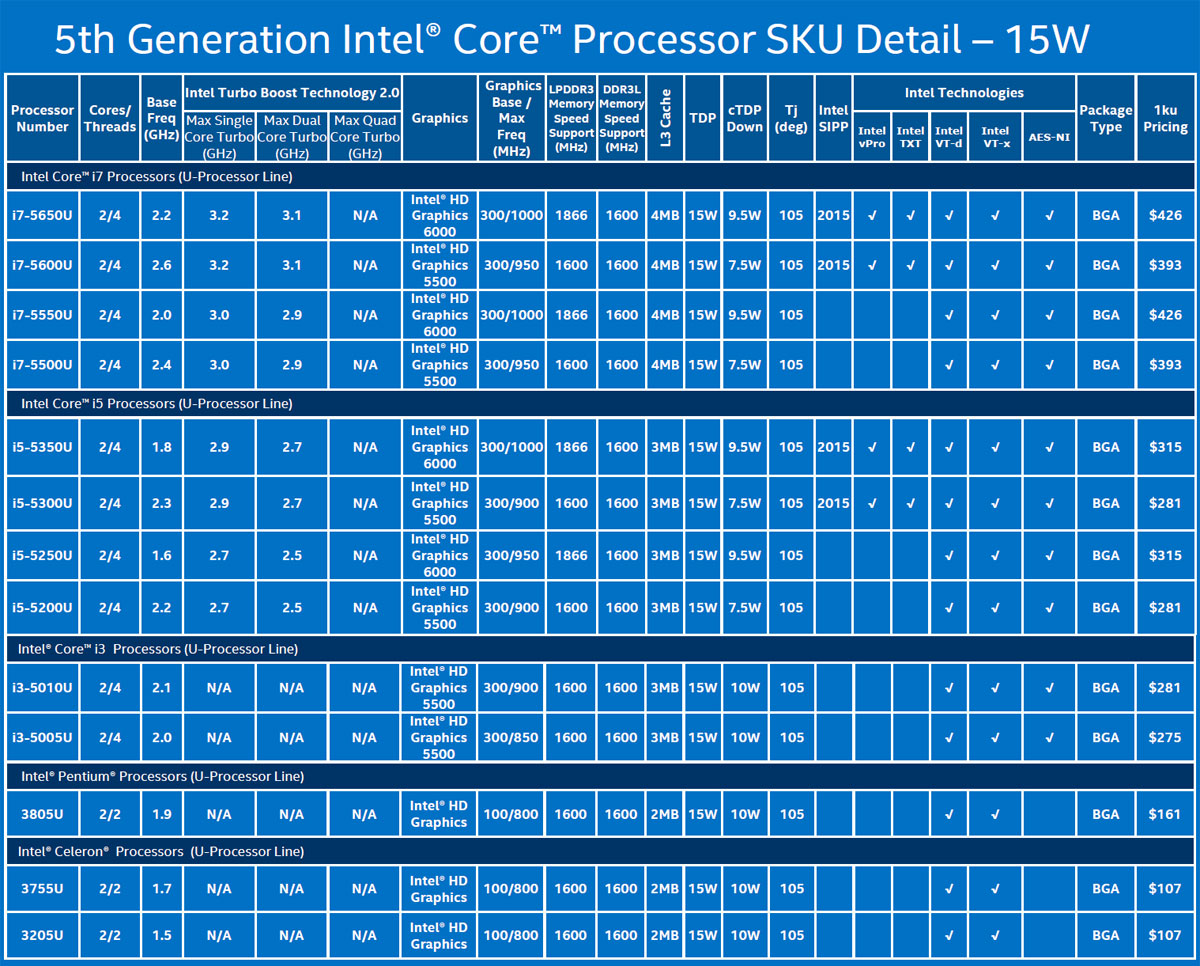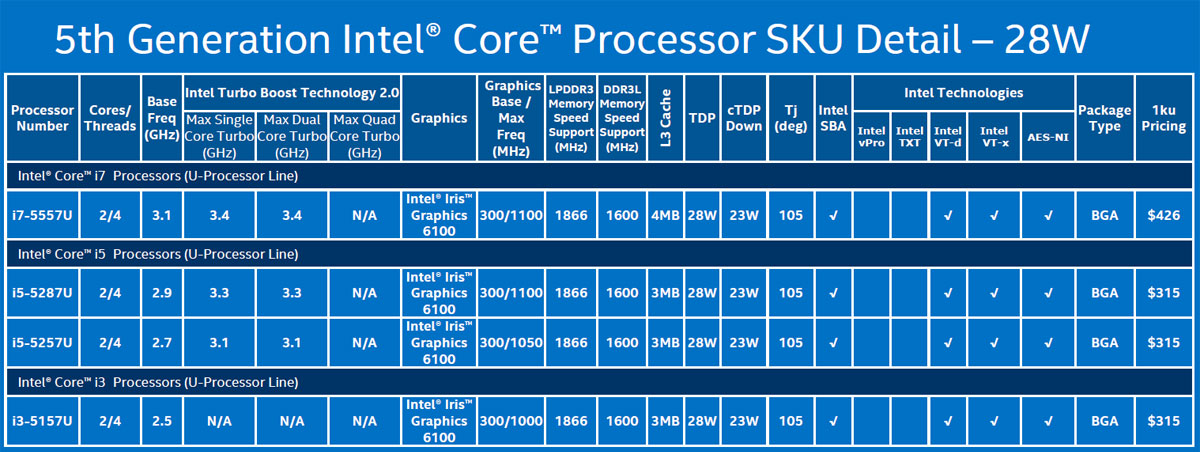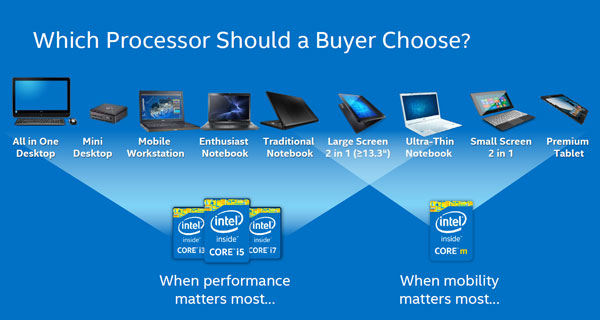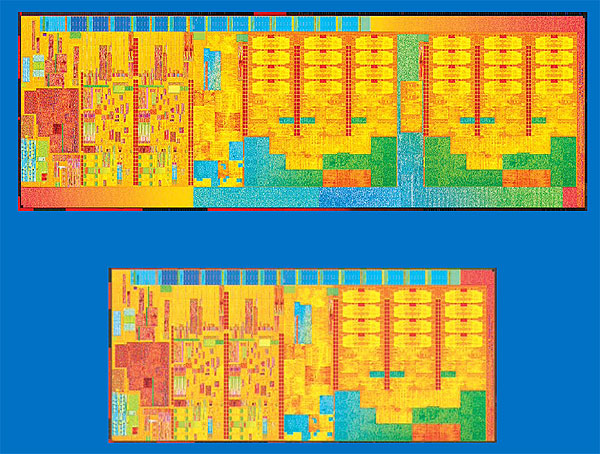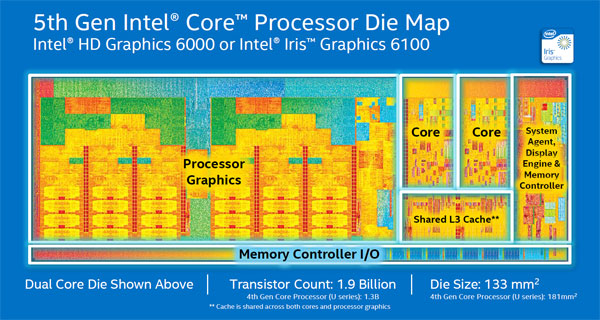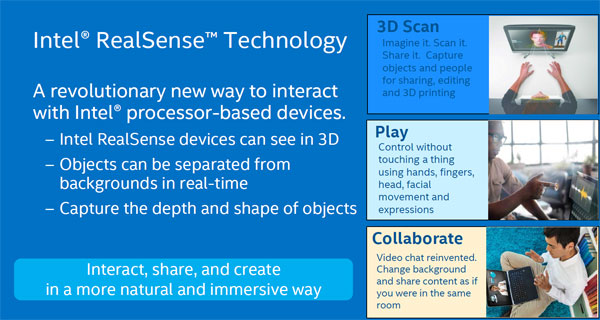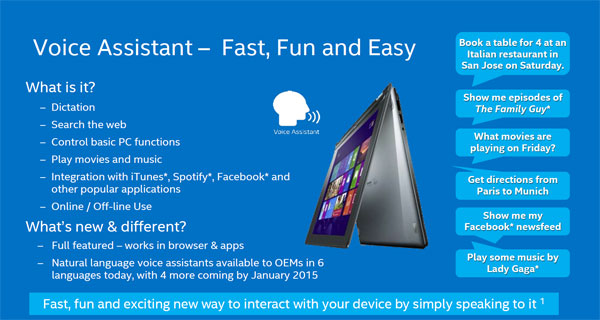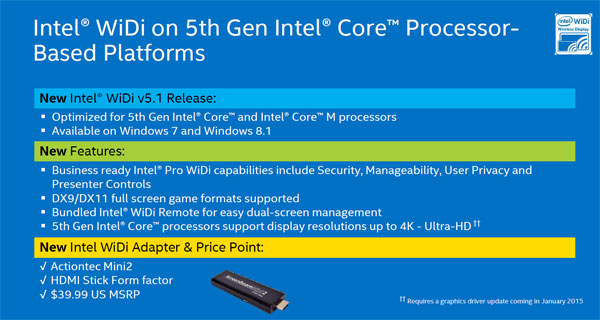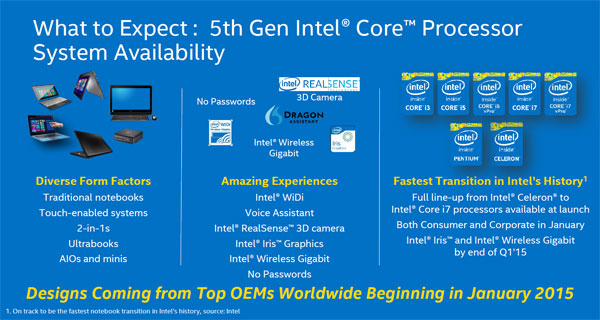Intel Reveals Details On Broadwell-U At CES
Chipmaker Intel has released new information about its 15 to 28 Watt Broadwell-U processors intended for products like Ultrabooks, Notebooks, Mini-PCs and All-in-One desktops.
The company released the following specifications of 14 new Core processors based on this architecture, in addition to one Pentium and two Celerons.
Until now, the only processors on the market based on Intel's new CPU architecture were the low-power Broadwell-Y chips with a 4.5 Watt TDP. While these can be competitive with the previous-generation 15 Watt Haswell-U processors from a performance standpoint, Broadwell-Y is intended for light and mobile platforms such as tablets, convertibles, and super-slim ultrabooks. On the other hand, we expect Broadwell-U to supply a healthy performance increase (Intel suggested a 20 percent improvement in graphics performance) to the form factors currently occupied by Haswell-U processors, but with even longer battery life. Intel has indicated that it will release the first Broadwell-U benchmark results soon, so check back for hard numbers later today.
There are two Broadwell-U CPU dies. The obvious difference between the two is that the larger die has double the graphics resources:
If the smaller die looks familiar, that's because it's the same one that Intel released to show us what Broadwell-Y looks like. The Broadwell-U products with Intel HD 5500 graphics (GT2) are essentially Broadwell-Y chips with a much higher thermal design power limitation. The large die, though, boasts GT3 graphics and is split between HD 6000 (15 Watt) and Iris 6100 (28 Watt) products. Note that this version assigns more than half of the die area exclusively to graphics resources. While the GT2 is limited to three slices of eight execution units for 24 in total, the GT3 doubles this to 48. We're very interested to see what these new GPUs can do when it comes to game performance. Intel is launching their 28 Watt Broadwell-U processor line today, but we won't be able to buy any models equipped with Iris 6100 graphics until the tail end of Q1 2015, unfortunately. By the way, the company claims that all of these GPUs are fully DirectX 12-ready.
As for general availability, we're told to expect to see the first products arrive this month. Intel also let us know that Chromebooks equipped with Broadwell-Y and -U will be announced soon, and should arrive in the market in February. We won't see desktop Broadwell processors with a 45 Watt TDP until the middle of 2015.
Aside from processors, Intel also released some information regarding a number of technologies designed to drive new ways to interact with PCs. This is marketed under the blanket of Intel's RealSense brand. One of the interesting aspects of RealSense is its ability to use the PC camera to track the user's environment, including their gestures. It looks like it may be Intel's answer to Microsoft's Kinect, but we'll have to try it out to see exactly what it can do. Hopefully, there will be a demo at the show this week.
Another of these features is Voice Assistant, software that allows the user to dictate, search the web, and control PC functions. It can work both offline and online and is now available with six-language support, with four more languages coming online this year. Intel has partnered with the makers of Dragon Naturally Speaking in the past and this looks like the fruit of that partnership. In any case, we're excited to see how well it can recognize speech in a real-world environment. It may become a serious competitor to Apple's Siri and Microsoft's Cortana.
Get Tom's Hardware's best news and in-depth reviews, straight to your inbox.
The company also discussed its WiDi version 5.1 release, a bundled application for screen management. It features support for 4K UHD and availability is expected this month.
That's all we have to discuss for now, but as we mentioned previously, we expect to publish some performance comparison numbers and information later today. Check back frequently for more CES coverage.
Follow us @tomshardware, on Facebook and on Google+.
Don Woligroski was a former senior hardware editor for Tom's Hardware. He has covered a wide range of PC hardware topics, including CPUs, GPUs, system building, and emerging technologies.
-
greghome Dear Intel,Give me Quad Core i7s (Broadwell or ULV in general) or don't bother at all.Reply -
ptmmac Yawn, the death of Denson scaling has made each new CPU introduction so boring. Yes I would love to have better battery life, but when it takes decades to get significant results it is pretty hard to get very excited about things. During the late 90's we saw 1000 fold improvement in processing speed for single threads. We need a new process based on light that is not so close to melting down from power loss.Reply -
hst101rox 28w for 3.1GHZ dual core computing? That is better than 37w or so of Haswell. Maybe 37w for Broadwell will be the midrange quad core laptop chips and maybe 6 core laptop chips will finally come out?Reply
Wonder what kind of performance desktop CPUs (clockspeed) will have.
And then 11nm will be even better. Maybe 28w TDP for high clock speed quad cores.. -
TechyInAZ Intel's is really pushing their graphics GPUs now. :)Reply
Very interesting, so why still dual core? 4 mini quads would be better in my opinion (kind of like the atom/pentium quadys). -
Adroid Realsense looks like a failure in the making. Would rather just have faster and cooler, but I'm a builder/pc type. I want to type on my PC not talk to it or wave at it.Reply
Hopefully skylake will be more exciting. -
mokki Do the new broadwells have fixed transactional memory (tsx) support or is it still buggy and disabled?Reply -
Cryio I really hate this approach on laptops. Every Intel chip is an i3 with slight buffs here and there.Reply -
InvalidError Reply
AFAIK, desktop Broadwell was always tabled for late-2015 last year, Intel also said Skylake's launch was still on track for late-2015 as well.14979602 said:So still no news on desktop versions of Broadwell eh?
As for Broadwell Y/U's launch, not impressed by the $300+ pricing on nearly all models. -
firefoxx04 im sure laptop quads will come around. I have an ivy bridge quad i7 and its pretty great. Turbos to 3.2ghz most times.Reply
